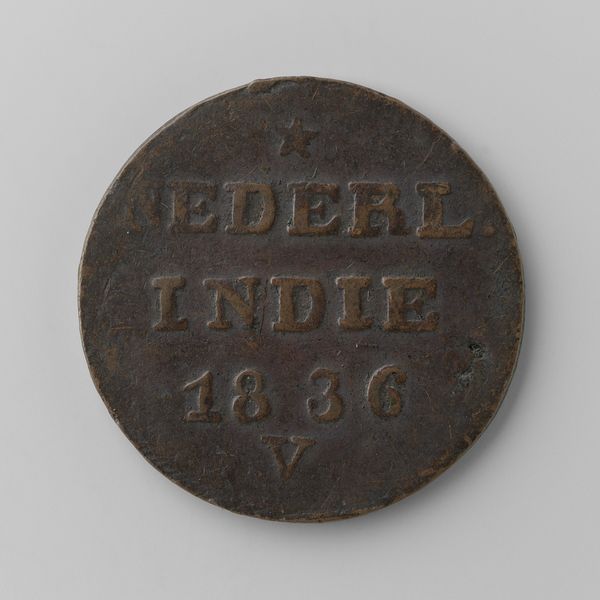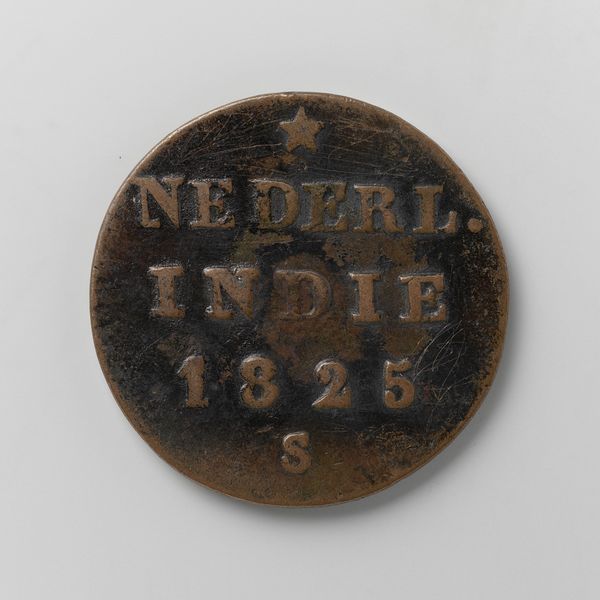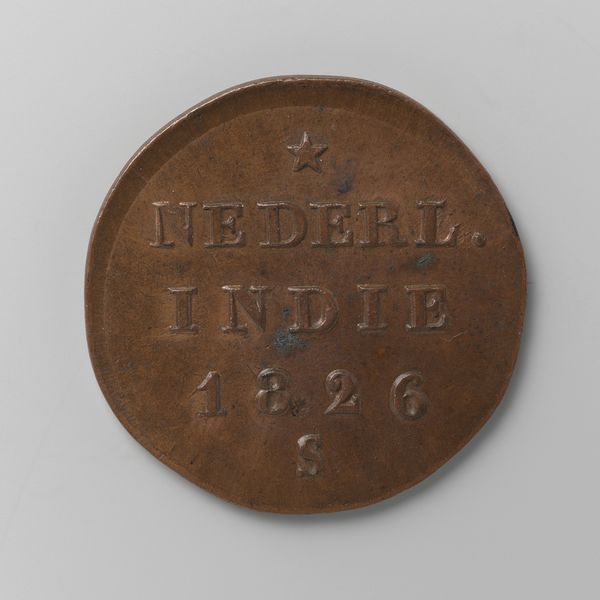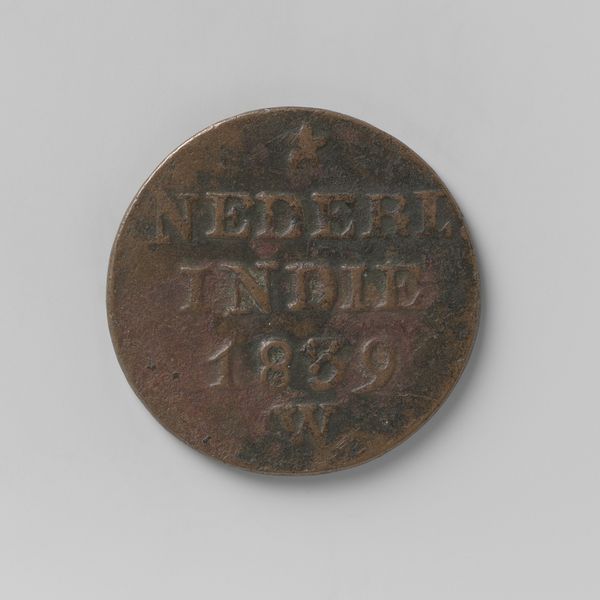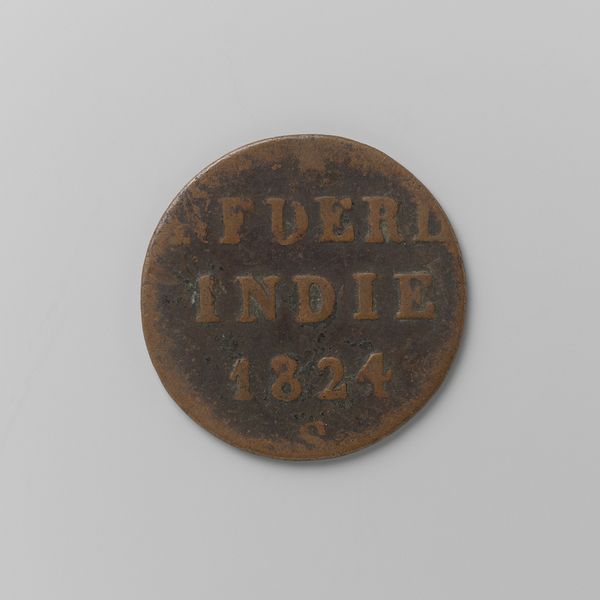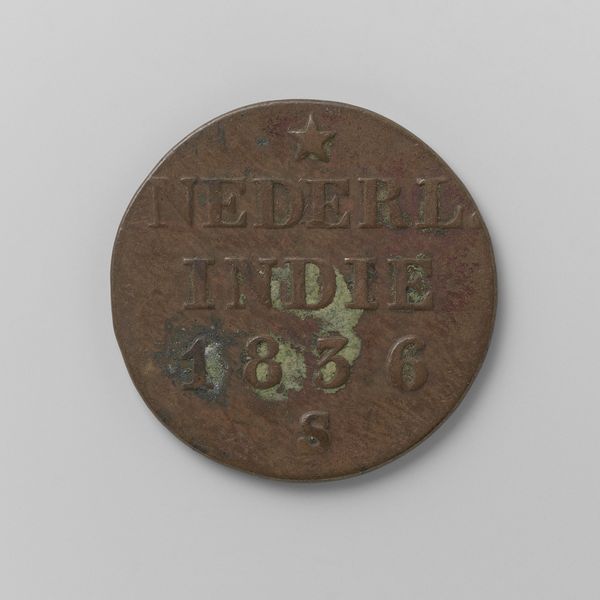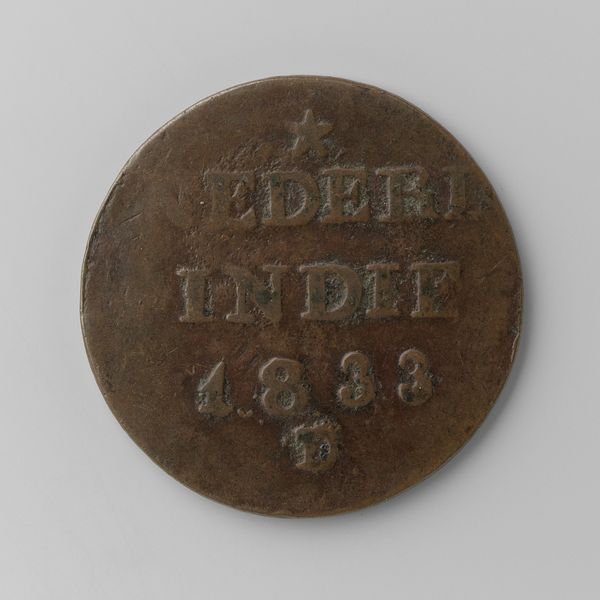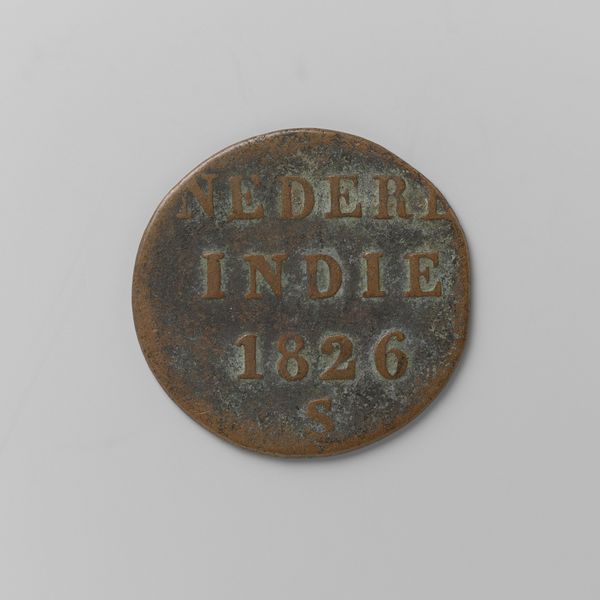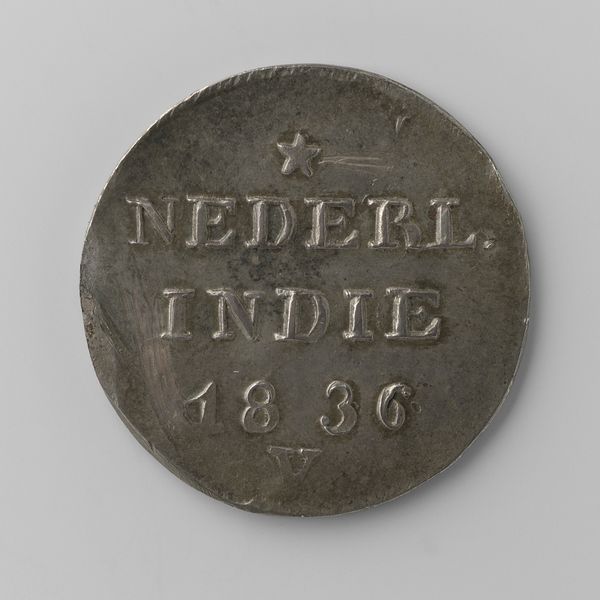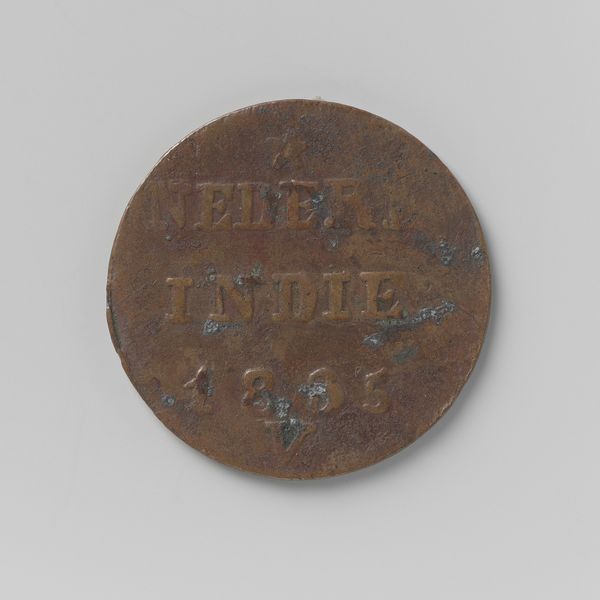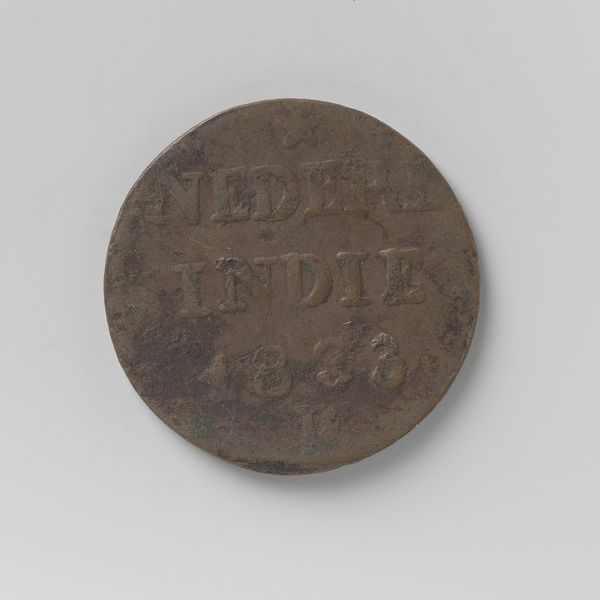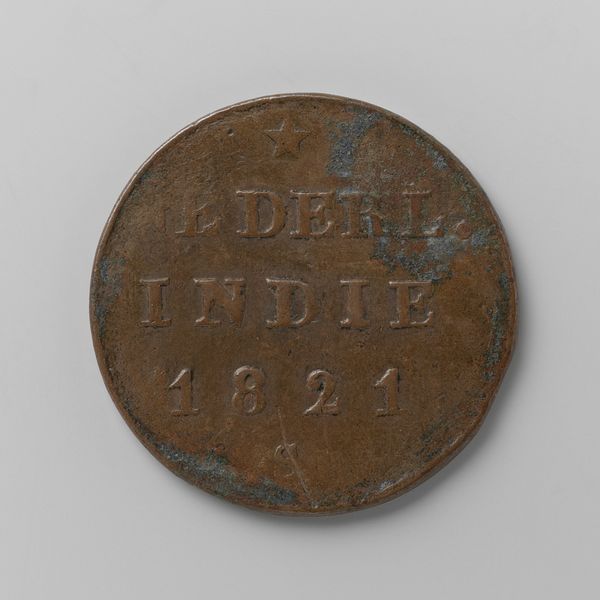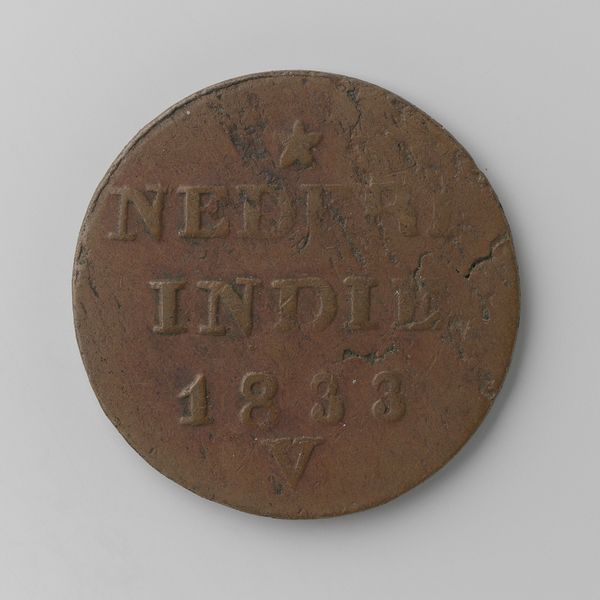
drawing, print, metal, bronze
#
portrait
#
drawing
#
dutch-golden-age
# print
#
metal
#
sculpture
#
bronze
Dimensions: diameter 2.1 cm, weight 2.95 gr
Copyright: Rijks Museum: Open Domain
This is a 1/4 stuiver coin from the Dutch East Indies, dating back to 1836, during the reign of King Willem I of the Netherlands. Its circular form, a familiar shape in coinage, is rendered in copper, giving it a warm, reddish-brown hue. The coin's surface is divided into distinct visual fields, each conveying specific information. A five-pointed star sits atop the inscription 'NEDERL. INDIË,' followed by the year '1836' and the mint mark 's.' These elements are arranged in a hierarchical order, emphasizing the colonial power's name over the geographical designation and the date of issue. The coin's design uses a semiotic system to assert colonial authority. The star can be interpreted as a symbol of guidance or dominance, while the inscription clearly marks the territory as part of the Dutch realm. The very act of minting this coin in 1836 signifies the Netherlands' economic and political control over the East Indies. Notice how the incised letters and numbers create a tactile surface that underscores its function as a tool of trade. In its physical form and symbolic language, the coin embodies the complex power dynamics of colonial rule.
Comments
No comments
Be the first to comment and join the conversation on the ultimate creative platform.

